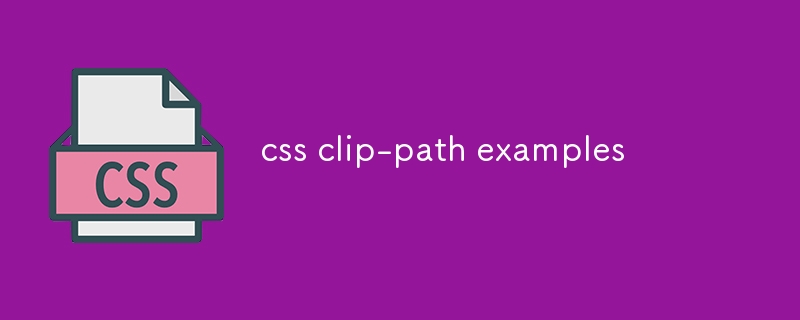Found a total of 10000 related content

TN3 Gallery - #1 Professional Image Gallery
Article Introduction:TN3 Gallery: A powerful custom image library based on HTML5
TN3 Gallery is a new HTML5 image library developed using jQuery, which is highly customizable. I know you might be thinking: "Another picture library plugin?" But TN3 is by no means an ordinary picture library! It represents a new generation of the photo gallery, here are the reasons why you should use it as your preferred photo gallery.
TN3 Gallery demo features:
Amazing loading speed
Advanced Album View: Full Screen Mode is amazing!
Movie-level image transition effect
A wide variety of user-friendly skins to choose from
Professional look and feel
Fully customization via TN3 API
Load your gallery using XML
2025-03-03
comment 0
770

How to Improve the Performance of My HTML5 Website?
Article Introduction:This article addresses HTML5 website performance optimization. It highlights key issues like slow server response, large file sizes, and excessive HTTP requests, offering solutions such as image optimization, code minification, and leveraging browse
2025-03-10
comment 0
492

Decorating the Web with CSS Border Images
Article Introduction:Previously, adding decorative elements to web pages (such as fancy borders) required slicing the image and patiently adjusting the CSS code until the effect was satisfactory.
Now, CSS simplifies this process. Just a few lines of code to add rather complex borders to your website. This article will show you how to do this.
Important points
CSS allows adding complex borders to web pages with just a few lines of code, including adding background images on the border using the border-image-source property.
The border-image-slice property applies the selected image to the border, dividing the image into nine areas: four corners, four sides, and one middle area. You can choose to specify one to four numbers for the offset or
2025-02-23
comment 0
874

H5 Code: Writing Clean and Efficient HTML5
Article Introduction:How to write clean and efficient HTML5 code? The answer is to avoid common mistakes by semanticizing tags, structured code, performance optimization and avoiding common mistakes. 1. Use semantic tags such as, etc. to improve code readability and SEO effect. 2. Keep the code structured and readable, using appropriate indentation and comments. 3. Optimize performance by reducing unnecessary tags, using CDN and compressing code. 4. Avoid common mistakes, such as the tag not closed, and ensure the validity of the code.
2025-04-20
comment 0
1122

How to make a responsive website with HTML5 and CSS3?
Article Introduction:The key to making a responsive website lies in the reasonable cooperation between HTML5 and CSS3, and the core is to make web pages display well on different devices. 1. Use HTML5 semantic tags to build clear structures, such as, , etc., to make the code easier to read and facilitate search engine crawling; 2. Use CSS3 media query to achieve multi-device adaptation, and apply different rules by detecting screen width, such as setting breakpoints such as mobile phones and tablets; 3. Use elastic layout (Flexbox or Grid) to deal with alignment and arrangement issues, and ensure that the navigation bar and other content automatically adapt to the screen; 4. Set image adaptation, use max-width:100% and srcset attributes to ensure that the image does not destroy the layout and improve the loading effect. Mastering these four key points can achieve compatibility with multiple settings
2025-07-13
comment 0
504


How does the H5 page production reflect the effect
Article Introduction:The performance of H5 pages involves all aspects, including: HTML structure, CSS style, JavaScript interaction, as well as performance optimization and best practices. In H5 code, HTML is responsible for structure, CSS is responsible for style, and JavaScript is responsible for interaction. Optimization technologies include image compression, code optimization, caching strategies, etc. to ensure user experience. In short, the H5 effect is a systematic project that requires comprehensive consideration of design, code, performance and other aspects.
2025-04-06
comment 0
556

What exactly does H5 page production mean?
Article Introduction:H5 page production refers to the creation of cross-platform compatible web pages using technologies such as HTML5, CSS3 and JavaScript. Its core lies in the browser's parsing code, rendering structure, style and interactive functions. Common technologies include animation effects, responsive design, and data interaction. To avoid errors, developers should be debugged; performance optimization and best practices include image format optimization, request reduction and code specifications, etc. to improve loading speed and code quality.
2025-04-06
comment 0
1490

uniapp Getting Started Practical Export the front-end page to pdf
Article Introduction:background
The product requires that the company's mini-programs and websites need to export product details into pdf, so today I'm thinking about how to export the front-end page into pdf.
Realize the effect
Web site
Reminder: Please modify the following code image address yourself.
demo: Overall it is very simple, just use html2canvas to convert dom into pictures, then add pictures to jsPDF, and then save it.
2024-11-09
comment 0
936

HTML5: The Standard and its Impact on Web Development
Article Introduction:The core features of HTML5 include semantic tags, multimedia support, offline storage and local storage, and form enhancement. 1. Semantic tags such as, etc. to improve code readability and SEO effect. 2. Simplify multimedia embedding with labels. 3. Offline storage and local storage such as ApplicationCache and LocalStorage support network-free operation and data storage. 4. Form enhancement introduces new input types and verification properties to simplify processing and verification.
2025-04-27
comment 0
751

HTML5 Features: The Core of H5
Article Introduction:The core features of HTML5 include semantic tags, multimedia support, form enhancement, offline storage and local storage. 1. Semantic tags such as, improve code readability and SEO effect. 2. Multimedia support simplifies the process of embedding media content through and tags. 3. Form Enhancement introduces new input types and verification properties, simplifying form development. 4. Offline storage and local storage improve web page performance and user experience through ApplicationCache and localStorage.
2025-05-04
comment 0
332

What are the key differences between HTML4 and HTML5?
Article Introduction:Compared with HTML4, HTML5 has significantly improved semantic tags, multimedia support, form functions and local storage. 1. HTML5 introduces more semantic tags such as, , etc., which improves code readability and SEO effect; 2. Natively support audio and video tags, without relying on third-party plug-ins, which improves compatibility and loading speed; 3. Add a variety of form input types and supports built-in verification mechanisms, reducing the use of JavaScript; 4. Provide ApplicationCache and localStorage/sessionStorage to realize offline applications and efficient data storage, while HTML4 can only rely on inefficient cookies to store a small amount of data.
2025-07-03
comment 0
497

Using HTML5 Source Set for Responsive Images (srcset)
Article Introduction:How to implement responsive image loading on different devices? Use HTML5's srcset and sizes properties. The specific methods are: 1. Prepare pictures of multiple sizes and mark the width with w units; 2. Define the viewport ratio of pictures under different screen widths in sizes, such as (max-width: 600px)100vw; 3. Pay attention to setting DPR high-definition adaptation, such as 1x/2x descriptor; 4. Always keep src as a compatibility solution; 5. Plan the image size according to the device breakpoint, such as 480px/768px/1024px, etc.; 6. Test the loading effect of each size through the developer tool. This ensures that the browser accurately selects the best picture, taking into account loading speed and display quality.
2025-07-05
comment 0
441

Best practices for H5 page making
Article Introduction:Efficient H5 production relies on a deep understanding of tools, specifications, and performance. Specifically, it includes: proficiency in basic technologies such as HTML5, CSS3, and JavaScript. Make full use of front-end frameworks (such as Vue, React, Angular) to improve development efficiency. Build an efficient page architecture, adopt a modular design, and split the page into independent modules. Optimize code quality, use CSS preprocessor, write concise JavaScript code, and avoid abuse of global variables. Focus on performance optimization, including image compression, code compression and reducing the number of HTTP requests.
2025-04-06
comment 0
826

Building H5 Augmented Reality Experiences with AR.js
Article Introduction:AR.js is a lightweight open source AR framework based on web technology. Users can experience AR content through their browser without installing an app. It uses HTML5 and JavaScript to combine A-Frame or Three.js to render 3D scenes, and realizes image recognition and overlay through the camera, supporting image recognition, position positioning and other functions. When using it, you can quickly start by following the following steps: 1. Introduce the JS library of A-Frame and AR.js; 2. Create the basic A-Frame scene and embed the AR configuration; 3. Use Hiro images as the default identification mark to test the effect. Frequently asked questions include that the camera cannot be accessed and that HTTPS and permissions are required. It is recommended to use high contrast diagrams and keep the light good.
2025-07-20
comment 0
524

Can H5 run without JS?
Article Introduction:HTML5 can run without JavaScript, but its functionality will be greatly reduced. Here are the reasons: Lack of interactivity: Unable to click, enter, or submit a form. Dynamic content cannot be displayed: News lists, product displays, etc. require JavaScript to obtain data from the server. No animation effect. Unable to implement complex applications: Online games, editors, etc. require a large amount of JavaScript code to implement logic and functions. Limited performance optimization: JavaScript's optimization strategy can improve web page performance.
2025-04-06
comment 0
640

What is the tag in HTML5?
Article Introduction:HTML5 tags are used to provide metadata of web pages, including setting character encoding, page description, keywords, author information, controlling mobile viewports, social sharing optimization and website theme colors. 1. Set character encoding (such as UTF-8) to avoid garbled code; 2. Provide page description and keywords to improve SEO; 3. Use viewport to control the mobile display effect; 4. Optimize social sharing preview through OpenGraph or TwitterCard tags; 5. Set theme-color to enhance brand recognition in the browser.
2025-07-18
comment 0
866

css clip-path examples
Article Introduction:CSSclip-path can create unique shapes and responsive designs. 1. Use circle(), ellipse(), inset() and polygon() to create basic shapes; 2. Use polygon() to create image masks such as hexagons; 3. Use viewport units to realize responsive wave edges; 4. Use transition to realize hover animation; 5. It is often used in avatars, hero areas, galleries and buttons. Pay attention to browser compatibility and add -webkit-prefix to ensure support. The final effect is elegantly downgraded, and use simple code to achieve rich visual effects.
2025-07-28
comment 0
562

HTML5 tutorial for beginners
Article Introduction:It is not difficult to learn HTML5, it only takes four steps to get started. 1. HTML5 is a markup language used to define web page structure and content, describe titles, paragraphs and image locations through tags such as, etc., and add semantic tags such as and improve readability and SEO; 2. Start writing HTML5 pages without complex tools, use text editor to write basic structure code and save them as .html files to open in the browser; 3. Add common elements such as pictures, links, forms and audio and video to enhance page functions, such as displaying pictures, creating links, collecting user input, and playing videos; 4. Learn to check errors, use the browser's "developer tools" to review elements or W3C verification tools to troubleshoot tag spelling, closure and path problems, and quickly practice
2025-07-15
comment 0
534



















